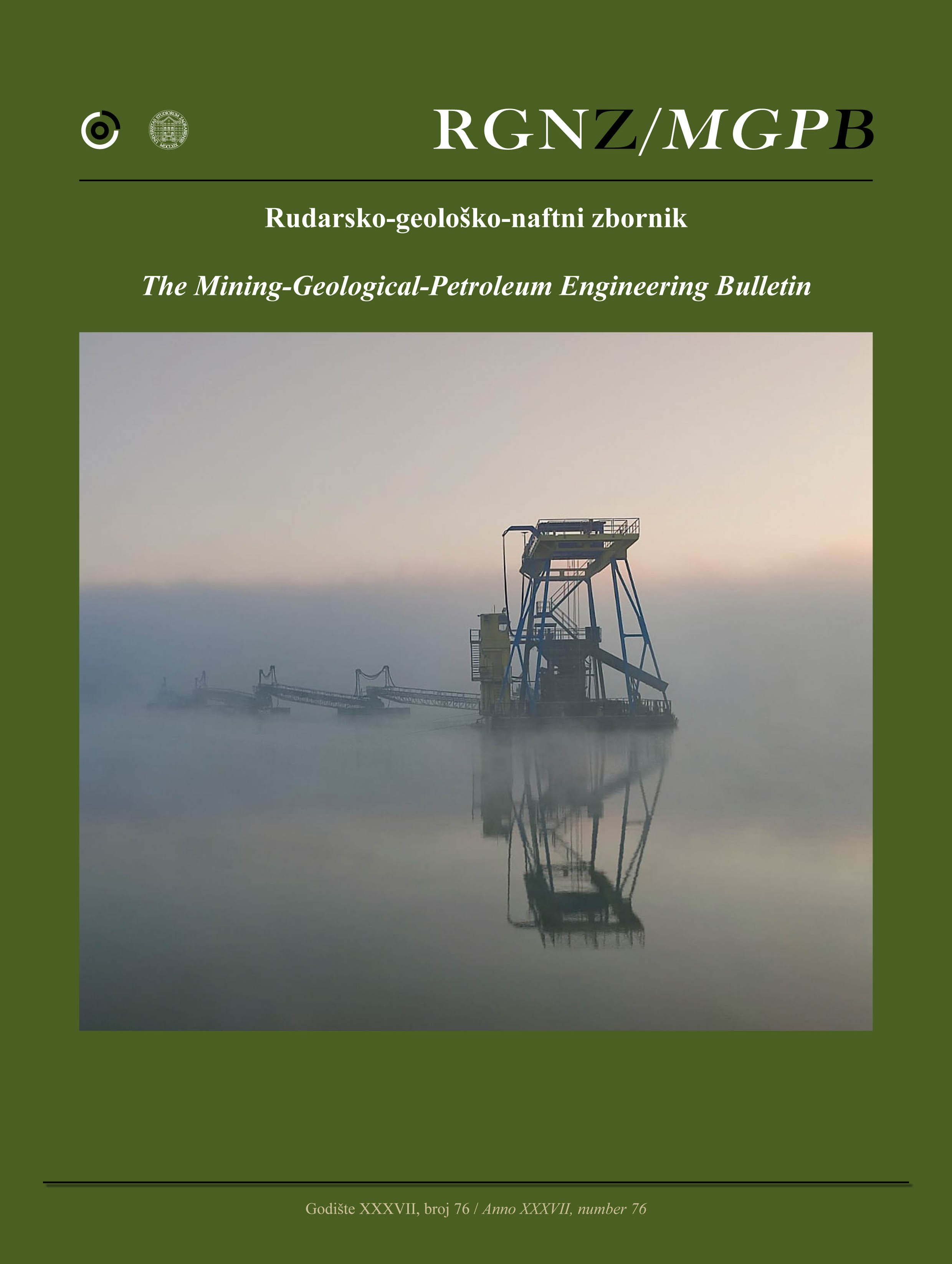Anthropogenic Hazards Assessment of Mining Activities in Surghar Range, Punjab, Pakistan
DOI:
https://doi.org/10.17794/rgn.2025.5.8Keywords:
coal mining, environmental hazards, Potentially Toxic Elements (PTEs), water quality, soil contaminationAbstract
This study investigates the environmental impacts of coal mining in the Surghar Range, Punjab, Pakistan, with a focus on the contamination of soil and groundwater by potentially toxic elements (PTEs). To evaluate the extent and sources of contamination, 22 soil and 134 water samples were collected and analyzed using standard physicochemical and geochemical methods. This study identified iron (Fe), zinc (Zn), and lead (Pb) as the primary anthropogenic PTEs, while chromium (Cr) and arsenic (As) also appear at elevated levels in some locations. Soil PTE concentrations followed the order: Fe > Zn > Pb > Cr > As. Pollution indices revealed moderate to high levels of contamination, with a pollution load index (PLI) of 1.20 indicating overall moderate pollution. Although the potential ecological risk index (PERI) was relatively low at 18, the concentration levels of certain PTEs exceed internationally recognized thresholds, necessitating environmental remediation. Principal Component Analysis (PCA) identified Fe and Zn as dominant contributors to pollution. Groundwater analysis showed a spatial gradient in water quality: samples near the Indus River were of freshwater quality, while salinity levels increased westward toward the mining zone, with brine-level salinity detected in Tehsil Isa Khel. Water near mining areas exhibited lower pH and higher electrical conductivity (EC), indicative of acid mine drainage and sulfur-rich coal influence. Comparative analysis with global mining regions revealed that mean PTE concentrations in the Surghar Range are significantly higher, emphasizing the need for sustainable mining practices and targeted environmental management strategies to protect soil and water resources.
Downloads
Additional Files
Published
Issue
Section
License
Copyright (c) 2025 Syed Sajjad Ahmad, Hafiz Muhammad Zaheer Afzal, Hafiz Zeeshan Akram, Sajjad Khan, Ihtisham Islam, Salman Ahmed Khattak

This work is licensed under a Creative Commons Attribution 4.0 International License.
Creative Commons-BY
Authors who publish with this journal agree to the following terms:
In agreeing this form, you certify that:
- You read the ethical codex of the RGN zbornik available at journal web.
- You submitted work is your original work, and has not previously been published and does not include any form of plagiarism.
- You own copyright in the submitted work, and are therefore permitted to assign the licence to publish to RGN zbornik.
- Your submitted work contains no violation of any existing copyright or other third party right or any material of an obscene, libellous or otherwise unlawful nature.
- You have obtained permission for and acknowledged the source of any illustrations, diagrams or other material included in the work of which you are not the copyright owner.
- You have taken due care to ensure the accuracy of the work, and that, to the best of your knowledge, there are no false statements made within it.
- All co-authors of this submitted work are aware of, and in agreement with, the terms of this licence and that the submitted manuscript has been approved by these authors.
Publication licence
You retain copyright in your submitted work, according to journal license policy (CC-BY). By signing this form you agree that RGN zbornik may publish it under the publication licence. In summary the licence allows the following:
Anyone is free:
- To copy, distribute, display, and perform the work.
- To make derivative works.
Under the following conditions:
- The original author must always be given credit.
- The work may not be used for commercial purposes.
- If the work is altered, transformed, or built upon, the resulting work may only be distributed under a licence identical to this one.
Exceptions to the licence
In addition to publishing the work printed under the above licence, RGN zbornik will also enable the work to be visible online.
The journal editorial can change the licence rules anytime but it cannot retroactively restrict author(s) rights.


